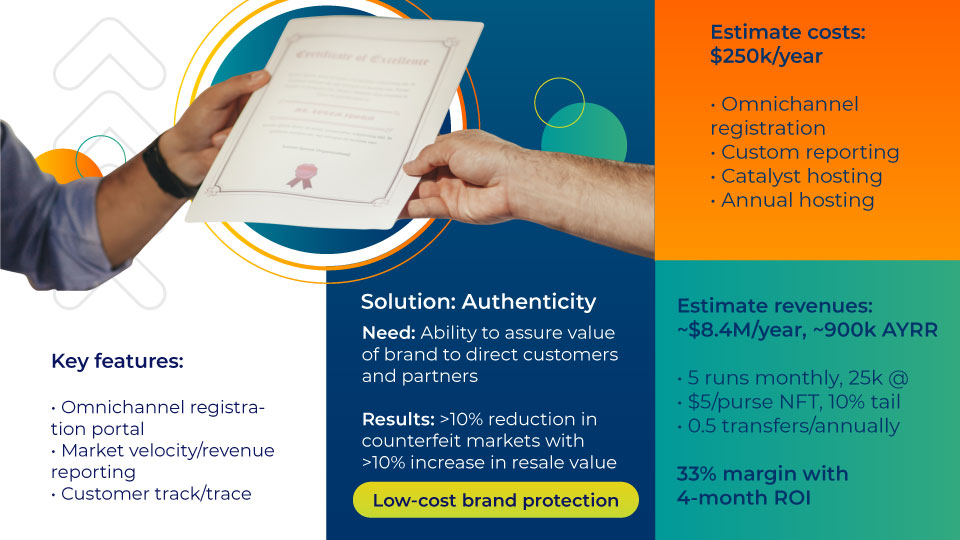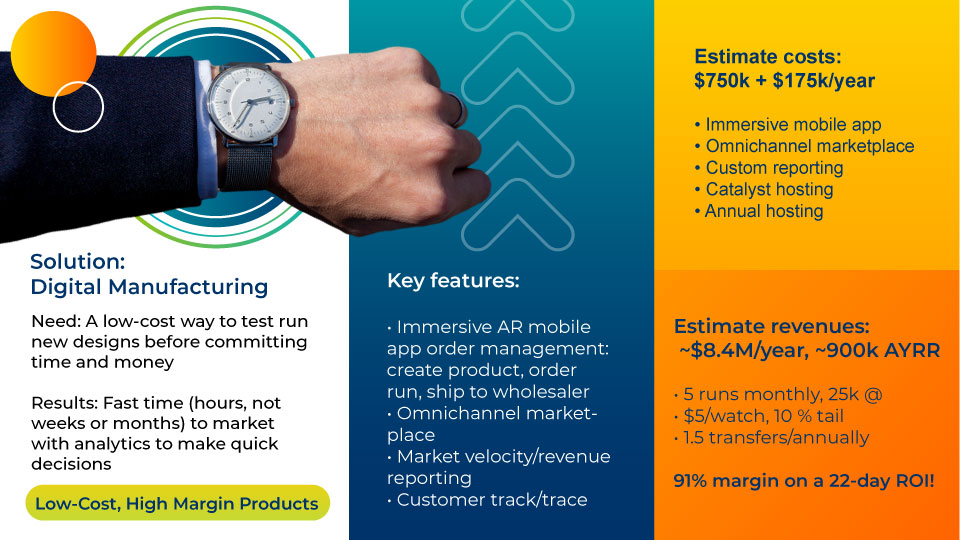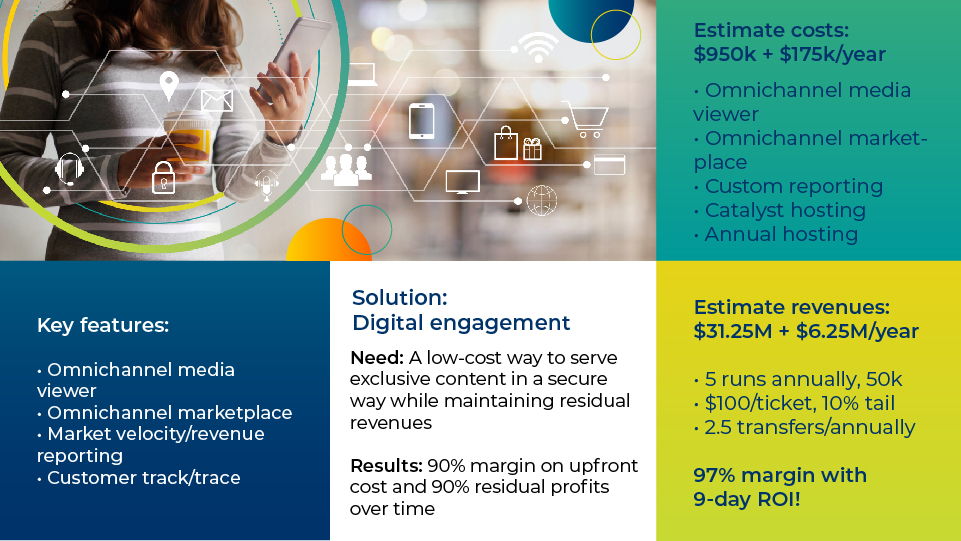Web3, the buzzy term for the next internet era based on blockchain technology, can foster a better customer experience in many use cases. For enterprises, a turnkey hosted decentralized application framework with the trust and privacy of blockchain built-in can enable better B2C applications, since the very design of blockchain allows companies to be everywhere all the time. When done right, Web3 concepts can be used to create personalized and frictionless experiences for consumers, while still guaranteeing privacy and security.
Below, we’ll break down a few examples of practical uses for Web3 concepts.
Web3 concepts in action
Let’s say you want to create a certificate of authenticity for a physical product you market, manufacture, and sell (like Nike does), or It could be a “badge” indicating attendance at an event (looking at you, AMC). To tie customers to your brand, you need a record of ownership that customers find value in now and over time. In a Web3 world, that’s called an NFT—non-fungible token. The art and card trading worlds are currently reinventing themselves with this technology, but it can also be used by enterprises.
This digital artifact can be given to a customer to keep in their digital wallet (that is, their blockchain user account). When they want to resell that product or prove ownership, it’s available 24/7/365 at no cost to you (the manufacturer) or them (the owner).
What do you need?
The math in a real-life example can be useful. Let’s look at what you need for execution:
- Omnichannel registration portal
- Marketing data reporting solution, including revenue
- Track and trace engine, to zoom in/zoom out of the data
This would cost you around $250k a year in a hosted software as a service (SaaS)-type framework. But what would that buy you? Say you want five limited edition runs monthly of around 25k NFT “badges.” The quantity changes barely affect the cost, but the results would be 1.5M NFTs a year, handed out to your customers digitally. You can charge for these items as you would for certificates of authenticity to the end customer or embed it in the cost. You can also add a “tail” to the NFT, in that when a transfer happens, you get a portion of the third-party sale as compensation for its creation. This feature could enable the solution to effectively pay for itself.

Let’s look at another use case, where you can provide a valuable, 100% digital product, like a media file—audio, visual, or audio-visual. We’ve built a use case around an immersive mobile application like Nike built, but this one is for watches. Consumers get exclusive, limited-edition designs from their favorite designers. The use case for the brand would be testing out new designs—to discover which designs are popular before investing millions of dollars and months to produce them. You would also need an omnichannel marketplace to go with the same portal and reporting solutions from before. The total cost of ownership is $750k with $175k/year. It’s a steep price for a campaign, but a cheap price for a factory to create unlimited digital products for pennies in minutes. The revenue potential here is telling:
- MSRP: $5 with a 10% tail
- 1.5 times a year the watch is re-sold
- Selling the same 1.5M “watch” NFTs a year
This leaves you with an amazing $8.4M revenue stream with a recurring revenue stream of $900k. Yes, this means recurring revenue on products you already manufactured and sold. Our calculations are a 22-day ROI with 91% margin. Eliminating physical manufacturing and distribution shows its upside here.

What if you create media content instead of apparel? Imagine seats for an exclusive event or a concert. Web3 can enable secure content digital distribution without using a middleman. The content would use an immersive customer experience, but the delivery method would be the same as before. The key importance of this use case is that you are not tied down by categorization or classification. If you can devise, market, and sell the experience, you can engage the customer using a Web3 lever.
Here are some specifics to the business we use:

Advocates of Web3 see the ability to reduce latency and intermediaries between the businesses making products and the customers consuming them. They see a fully hosted network connecting us all, free to use to view and track, and one that costs us fractions of pennies for each product produced or sold. Using this technology allows enterprises to connect, serve, and learn from customers directly without the need of physical presence, third-party transaction go-betweens, and/or heavily regulated privacy limitations.
So, what’s the catch? The technology is new and the skills to do this work are limited. You need smart, experienced, and capable people to help you turn Web3 from a pipe dream into real-world products. We offer that expertise. With our turnkey technology, we facilitate test runs of publicly tradeable NFTs at a fixed price. Find out how we can turn your Web3 project into reality.